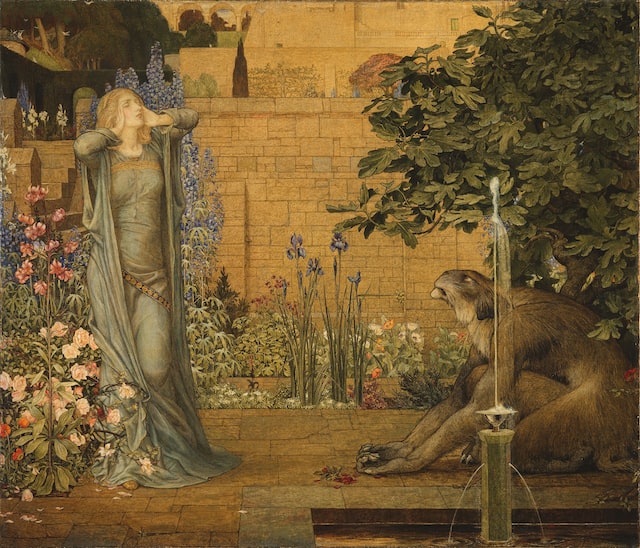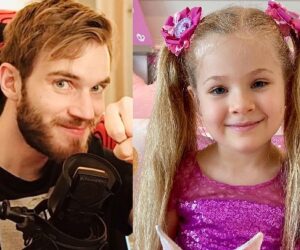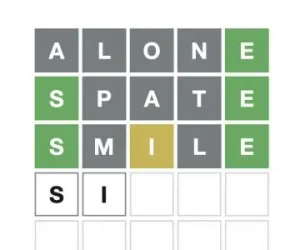
We join the initiative seconded on Twitter by many moviegoers by making a list of the 21 best films of the 21st century. We assume that any self-respecting list or ranking is unfair in itself, so not all of them are there, and not all of them are there. But if we have to choose, these are undoubtedly the titles that have made cinema history so far this century. Surely you miss some of them, so be sure to tell us which would be your favorite films.
1. A.I. ARTIFICIAL INTELLIGENCE (STEVEN SPIELBERG, 2001)
After Stanley Kubrick’s death, Spielberg took up an old project they had in common: the adaptation of Brian Aldiss’ short story ‘Super Toys Last All Summer. Unjustly received on its release, this extraordinary science fiction film about the essence of the human has been acquiring the status it deserves and is not only among the greatest works of the Ohio filmmaker but also among the best science fiction films in history in any respectable ranking. A superb visual spectacle of deep emotional charge, whose risky (and bitter) denouement was misinterpreted as maudlin.
2. MULHOLLAND DRIVE (DAVID LYNCH, 2001)
Disturbing dreams, mutable realities, double identities, mysterious boxes, neon lights, and mirror games between the real and the fictitious. Mulholland Drive is an absorbing cocktail that combines the essences that have made David Lynch the master of cinematic abstraction and an absolutely unique talent for creating unhealthy atmospheres and keeping the viewer fascinated by the evolution of his convoluted (and sometimes indecipherable) narrative codes. Naomi Watts shines in this true nightmare made into a film. A gem for viewers willing to let themselves be swept away by the Lynchian nebula.
3. BIRDMAN (ALEJANDRO GONZÁLEZ IÑÁRRITU, 2014)
Having overcome his professional breakup with screenwriter Guillermo Arriaga, Iñárritu signs in 2014 his most rounded film to date. The internal conflict of an actor who has come to grief for renouncing selling his art to the market serves Iñárritu as a pretext to x-ray failure and reflect on several of the ills of modern society. All shot in a long sequence shot. However, the technical filigree is not the greatest merit of a film with an impeccable cast, powerful lines of dialogue, and an altered rhythm according to the mental instability of its protagonist: an enormous Michael Keaton.
4. ZODIAC (DAVID FINCHER, 2007)
This is undoubtedly the most underrated of Fincher’s greatest works: an excellent crime thriller with an unhealthy atmosphere, which soon becomes a distressing psychological drama about the human obsession to discover the most unattainable truth. In this case, the identity of the so-called ‘Zodiac Killer,’ who caused panic in the city of San Francisco during the 60s and 70s. Magnificent work by Jake Gyllenhaal and Robert Downey Jr. in a film that transmits to the viewer the same uncertainty that the protagonists live with before the false clues of the murderer they are chasing.
5. MYSTIC RIVER (CLINT EASTWOOD, 2003)
If since the release of ‘The Bridges of Madison, the director Eastwood seemed relegated to producing functional, generic products. In 2003 his career took an unexpected turning point with this outstanding adaptation of Dennis Lehane’s novel. A powerful neo-noir, superbly acted and with a controversial outcome, which is striking for the bitterness that pervades every corner of a tale of stolen childhoods, loyalty, and revenge.
6. THE LAST NIGHT (SPIKE LEE, 2002)
Before becoming the showrunner of ‘Game of Thrones for HBO, at the age of 30, David Benioff published the first acclaimed novel that Spike Lee took to the movies with Edward Norton as the main character. The last hours at liberty of a thirty-year-old man convicted of drug trafficking focus the attention of this story on the decisions that mark us and the second chances. Within a magnificent general tone, the scene of Norton raging against the post 9/11 New York society in front of the mirror and an illusory happy ending that precedes a final shot of the kind that makes you cringe remains for the moviegoer’s memory.
7. MOULIN ROUGE! (BAZ LUHRMANN, 2001)
After adapting Shakespeare in a modern key, Luhrmann took a new leap into the void, turning Paris in 1900 into a colorful discotheque where an anachronistic jukebox full of pop hits from the late twentieth century plays non-stop. Moulin Rouge’ reinvented the musical with medleys that linked Bowie with U2, and some nods to the classic musical filtered through a modern video clip style. All this by way of accelerated editing that left more than one critic offside at its premiere. However, the time has placed this hyper-romantic musical among the undisputed classics of the genre. Much has to do with the excellent work of its leading couple, with special mention to a plethoric Nicole Kidman, who lived with the arrival of the new century, the great turning point of her career.
8. THE PIANIST (ROMAN POLANSKI, 2002)
Roman Polanski’s approach to his family’s past as a Holocaust survivor, adapting the memoirs of Wladyslaw Szpilman, was a pleasant surprise at its premiere at the Cannes Film Festival. The well-deserved Palme d’Or for the Polish director is justified not by the neat calligraphy of the film’s first section, which reconstructs the convulsive historical period with a certain academicism, but by a magnificent second segment in which the Polanskian claustrophobia breaks through the ruins of Krakow. The film transcends the historical chronicle to become a story about the survival of art in the face of barbarism, and as such, it is dazzling.
9. BROKEBACK MOUNTAIN (ANG LEE, 2005)
The romance between cowboys Jack Twist and Ennis Del Mar (Jake Gyllenhaal and Heath Ledger) is probably the most acclaimed romantic drama of the early 21st century. Ang Lee successfully brings Annie Proulx’s short story to the screen, bringing great sensitivity and restraint while subverting the keys to the traditional western. The story is permeable to the emotional torrent that its characters go through over the years but does not neglect to denounce the damage caused by the prevailing morality. The evocative music of Gustavo Santaolalla puts the icing on the cake of this resounding and painful masterpiece.
10. DOGVILLE (LARS VON TRIER, 2003)
After Dogma 95, Von Trier seeks new grounds for experimentalism using Bertolt Brecht’s theater as inspiration to turn a hangar with false rooms delimited with chalk into the stage of a film that deals with the violence inherent in the construction of modern America. An imperial Nicole Kidman gives life to the long-suffering protagonist of this shrewd parable about the dark corners of the American dream and the social ambivalence towards immigration in a country built on the false myth of individual freedoms. Its outcome is as disturbing as it is coherent.
11. FORGET ABOUT ME (MICHEL GONDRY, 2004)
From the inventive pen of Charlie Kaufman and the visual imagery of Michel Gondry comes this beautiful fable about memory, forgetfulness, and heartbreak in love that became an instant cult object, as well as serving as a new example of the validity of comedian Jim Carrey as a dramatic actor. However, the one who steals the show is a sweetly histrionic Kate Winslet, who plays the love (badly) forgotten by Carrey himself. An unusual and bittersweet film, which thrills for its honesty in dealing with love relationships from a truly original perspective.
12. MATCH POINT (WOODY ALLEN, 2005)
Fifteen years after ‘Crimes and Misdemeanors, and with an endless list of minor titles in between, Allen revisited the Dostoyevsky drama with excellent results. A magnificent parable about ambition, power, and luck as decisive factors in success forced the New York genius to step out of his comfort zone to build one of his best works. It was also his first meeting with Scarlett Johannson, who plays the object of desire of a disturbing Jonathan Rhys-Meyers.
13. THE DIVING BELL AND THE BUTTERFLY (JULIAN SCHNABEL, 2007)
The filmmaker and multidisciplinary artist Julian Schnabel was in charge of putting into images the overwhelming experiences of Jean Dominique-Bauby, a successful fashion journalist who suddenly suffered from captivity syndrome: a disease that limited his mobility to the eyelid of one of his eyes. Transcending the archetypal tale of illness and overcoming, Schnabel embraces risk by adopting a fully subjective point of view for much of the film, supported by the protagonist’s voice-over played by Mathieu Amalric and cinematography by Janusz Kaminski. A brave and moving film.
14. THE GREAT BEAUTY (PAOLO SORRENTINO, 2013)
The Neapolitan Paolo Sorrentino gives free rein in this, his masterpiece, to a dazzling visual baroque that borders on excess and serves as a luxury wrapper for a series of interesting existential questions that sprout on screen from the mind of a character as fascinating as that of the bon-vivant Jep Gambardella, given life by an immeasurable Toni Servillo. An emotional and intellectual journey in search of the essence of our (often) insignificant and noisy existence.
15. BOYHOOD (RICHARD LINKLATER, 2014)
As if it wasn’t enough with the titanic effort of filming in an interrupted way throughout a decade to be able to appreciate in real time the physical evolution of his young protagonist, Richard Linklater manages in ‘Boyhood’ to capture the key moments in the personal development of a middle-class American boy. In what is already his magnum opus (with the permission of the Dawn trilogy), Linklater uses music and some touches of the socio-political environment to contextualize a story that is otherwise universal in scope. Meanwhile, he unpacks the yearnings, fears, and concerns of his central character for three hours. Patricia Arquette won a well-deserved Oscar for her role as the protagonist’s mother.
16. MAD MAX. FURY ROAD (GEORGE MILLER, 2015)
George Miller’s unexpected return to the Mad Max universe gave viewers a major surprise in the form of a vibrant tour de force that puts us in the middle of a real whirlwind of frenetic action with little respite. With a couple of brushstrokes about the context and his characters (the Furious Charlize Theron steals the show from Tom Hardy without too much effort), Miller manages to hook us from the very first sequence to this unstoppable carousel of impact sequences, to which an extraordinary use of editing and sound turns into a wild experience for the audience. A first-class audiovisual spectacle.
17. DRIVE (NICOLAS WINDING REFN, 2011)
This vibrant neo-noir by Danish director Winding Refn is composed as a violent symphony in which a series of events force a silent protagonist to become a hero almost in spite of himself. A magnificent Ryan Gosling stars in this overwhelming exercise in style, full of memorable sequences planned to the millimeter (the one in the elevator takes the cake). An excellent supporting cast and a stupendous soundtrack contribute to elevating the film far above the B series that its premise seems to augur.
18. THE DARKEST NIGHT (KATHRYN BIGELOW, 2012)
A year after sweeping the Oscars with the remarkable ‘On Hostile Ground,’ director Kathryn Bigelow and screenwriter Mark Boal released their true masterpiece. Darkest Night is an outstanding chronicle, almost journalistic, about the CIA’s plans to find the whereabouts of Osama Bin Laden, which turns the particular point of view of a special agent of the secret service (played by Jessica Chastain) into the reflection of a collective obsession to close the open wounds, at different levels, in American society following the attacks of September 11. Its climactic sequence, which reconstructs the assault on the terrorist leader’s lair, is simply spectacular.
19. DUNKIRK (CHRISTOPHER NOLAN, 2017)
The much-discussed acclaimed Christopher Nolan left no room for debate after the release of ‘Dunkirk,’ perhaps the most uncontested of his blockbusters, at least in terms of the monumentality of its technical achievements. The film is a suffocating tale of the struggle for survival in which the editing, sound, and Hans Zimmer’s score play a decisive role in infecting a growing tension in its audience. This shocking reconstruction of the so-called Operation Dynamo from a triple perspective (land, sea, and air) is probably the best war film of this century.
20. PAN’S LABYRINTH (GUILLERMO DEL TORO, 2006)
To date, this extraordinary Spanish production is the best film by Mexican director Guillermo Del Toro. It is a beautiful fable set during the post-war period, in which a girl (Ivana Baquero) discovers a magical universe full of mysterious creatures in which she tries to escape from a tremendously gray and threatening reality. Del Toro combines rawness and lyricism with great skill, and his film is visually dazzling, thanks in large part to the excellent work of the artistic team.
21. SIDEWAYS (ALEXANDER PAYNE, 2004)
We end the 21 best films of the 21st century with Alexander Payne’s most acclaimed film, undoubtedly among the most satisfying comedies of the beginning of the century. It is a story of bitter aftertaste about the misadventures of two former college classmates who meet again, now in their forties, to go on a wine tour in which their old ghosts and vital frustrations make an appearance. Excellent script written by Payne himself and Jim Taylor, and a perfect cast headed by Paul Giamatti in the best role of his career.



